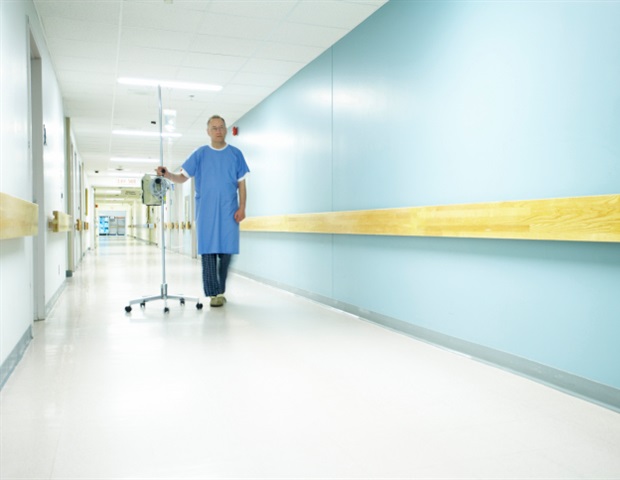Health care workers — particularly nurses — have a higher prevalence of SARS-CoV-2 infection than non-health care workers, according to researchers at Rutgers, which released baseline results from a large prospective study of participants at Rutgers and affiliated hospitals recruited during the early phase of the COVID-19 pandemic.
The study, published in the journal BMC Infectious Diseases, found that in early spring, the participants most likely to test positive for COVID-19 were nurses, workers taking care of multiple patients with suspected or confirmed COVID-19 and those who worked in a hospital with a higher proportion of infected patients.
As of Nov. 15, 2020, according to the CDC, there were more than 216,000 confirmed COVID-19 cases among health care workers in the United States, leading to at least 799 deaths. The Rutgers study evaluated 546 health care workers with direct patient exposure at two New Jersey hospitals and 283 non-health care workers with no direct patient contact.
At the start of the study in March, 40 health care workers and one non-health care worker tested positive for SARS-CoV-2 infection. Among all participants enrolled, more than 7 percent of health care workers were found to be positive for the novel coronavirus as compared to the very low rates of positive testing among non-health care workers. Also, consistent with disparities observed in the general public, Black and Hispanic participants had more positive test results.
Health care workers who reported caring for five or more patients with suspected or confirmed COVID-19 and those who spent a greater proportion of their time in patients’ rooms were more likely to test positive for the infection themselves.
Of the 40 infected health care workers, 25 were nurses. Intensive care unit workers had the lowest rates of infections among the health care workers, possibly due to the more consistent use of personal protective equipment.
We have all heard about how health care workers are the heroes on the frontlines of this pandemic, but we still don’t have solid answers about the risks to health care workers and who is most at risk. The initial results show that at the beginning of the pandemic, the higher rate of infection observed in urban North New Jersey areas, like Newark, was also reflected in the health care workers serving those communities.”
Emily Barrett, lead co-author, associate professor of biostatistics and epidemiology at Rutgers School of Public Health
“The baseline data reported here have helped us to monitor the spread of infection and examine risk factors for transmission among health care workers and others,” said lead co-author Daniel Horton, an assistant professor of pediatrics at Rutgers Robert Wood Johnson Medical School and assistant professor of epidemiology at Rutgers School of Public Health. “These findings and our ongoing follow-up of study participants have informed local strategies to protect the health care workforce, their families and their patients.”
The study was coordinated by Rutgers Biomedical and Health Sciences, the university’s academic health system. Study investigators are also involved in clinical trials and other studies exploring new drug treatments, antibody testing and long-term health tracking to provide insight into how to treat COVID-19 and prevent its spread. The study was funded by the National Center for Advancing Translational Sciences and the National Institute of Allergy and Infectious Diseases at the National Institutes of Health.
Barrett, E.S., et al. (2020) Prevalence of SARS-CoV-2 infection in previously undiagnosed health care workers in New Jersey, at the onset of the U.S. COVID-19 pandemic. BMC Infectious Diseases. doi.org/10.1186/s12879-020-05587-2.
